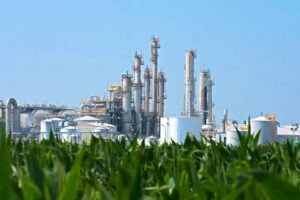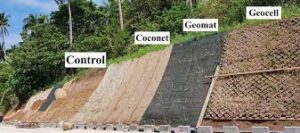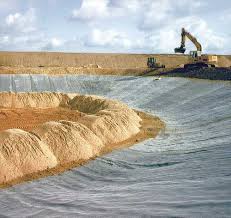Case Study: Wetland Project in Thimphu, Bhutan
Introduction
Wetlands are crucial ecosystems that provide numerous environmental benefits, including water filtration, flood control, and habitat for diverse species. However, wetland conservation and restoration require advanced solutions to manage water levels and maintain ecological balance. Ocean Non Wovens, a leading geosynthetics manufacturer and supplier, played a pivotal role in a wetland project in Thimphu, Bhutan, by providing state-of-the-art geosynthetic products. This case study explores the details of the project, the products used, and the significant impact they had on the wetland’s restoration and sustainability.
Table of Contents
Project Overview
The wetland project in Thimphu aimed to restore a degraded wetland area to enhance its ecological function and biodiversity. The project’s success depended on the effective use of geosynthetic materials to manage water levels, prevent soil erosion, and support vegetation growth. Ocean Non Wovens supplied two primary products for this project:
1. Ocean Laying & Welding of HDPE liner-1.5mm
2. Ocean Laying of Geotextile
The quantities used were 19,125 square meters of HDPE liner and 36,540 square meters of geotextile.
Product Details
HDPE Liner – 1.5mm
High-Density Polyethylene (HDPE) liners are widely used in environmental and civil engineering projects due to their durability, chemical resistance, and impermeability. For the wetland project, the 1.5mm HDPE liner provided several benefits:
– Water Containment: The liner ensured effective water containment, crucial for maintaining the wetland’s water levels and preventing leakage.
– Chemical Resistance: HDPE liners resist a wide range of chemicals, protecting the wetland from potential contamination.
– UV Resistance: The material’s UV resistance ensured longevity and sustained performance under direct sunlight exposure.
The welding process was meticulously carried out to ensure seamless joints, preventing any leakage and guaranteeing the liner’s effectiveness.
Geotextile
Geotextiles are permeable fabrics used in conjunction with soil to enhance its properties. The geotextile supplied by Ocean Non Wovens played a critical role in the wetland project:
– Soil Stabilization: The geotextile helped stabilize the soil, preventing erosion and providing a stable foundation for vegetation.
– Filtration: It allowed water to pass through while retaining soil particles, maintaining the wetland’s natural filtration process.
– Vegetation Support: By supporting root systems, the geotextile facilitated the growth of wetland vegetation, crucial for habitat restoration.
Implementation and Challenges
Installation Process
The installation of the HDPE liner and geotextile required careful planning and execution. The project team faced several challenges, including:
– Terrain: The wetland’s uneven terrain necessitated precision in laying the HDPE liner to ensure effective water containment.
– Weather Conditions: Adverse weather conditions, such as heavy rainfall, posed challenges during installation. The team had to adapt to ensure timely completion without compromising quality.
– Environmental Considerations: Minimizing disturbance to the existing ecosystem was a priority. The installation process was carried out with minimal disruption to the local flora and fauna.
Overcoming Challenges
Despite these challenges, the project team successfully implemented the HDPE liner and geotextile, thanks to:
– Expertise: Ocean Non Wovens’ technical team provided expert guidance throughout the installation process.
– Quality Products: The superior quality of the HDPE liner and geotextile ensured reliable performance, even under challenging conditions.
– Collaboration: Close collaboration with local authorities and environmental experts helped address ecological concerns and ensured the project aligned with environmental regulations.
Impact on the Wetland
The use of HDPE liners and geotextiles significantly improved the wetland’s functionality and sustainability:
– Enhanced Water Management: The HDPE liner effectively contained water, maintaining optimal levels for the wetland’s ecosystem.
– Soil Erosion Control: The geotextile stabilized the soil, reducing erosion and sedimentation in the wetland.
– Biodiversity Restoration: The improved conditions supported the growth of native vegetation and provided habitat for wildlife, enhancing the area’s biodiversity.
Conclusion
The wetland project in Thimphu, Bhutan, showcases the critical role of geosynthetics in environmental restoration. Ocean Non Wovens’ HDPE liner and geotextile products were instrumental in achieving the project’s goals, demonstrating their effectiveness in water management, soil stabilization, and biodiversity enhancement.
At Ocean Non Wovens, we are committed to providing innovative and sustainable geosynthetic solutions for environmental and civil engineering projects. Our products are designed to meet the highest standards of quality and performance, ensuring long-term benefits for our clients and the environment. Contact us today to learn how our geosynthetics can make a difference in your next project.



